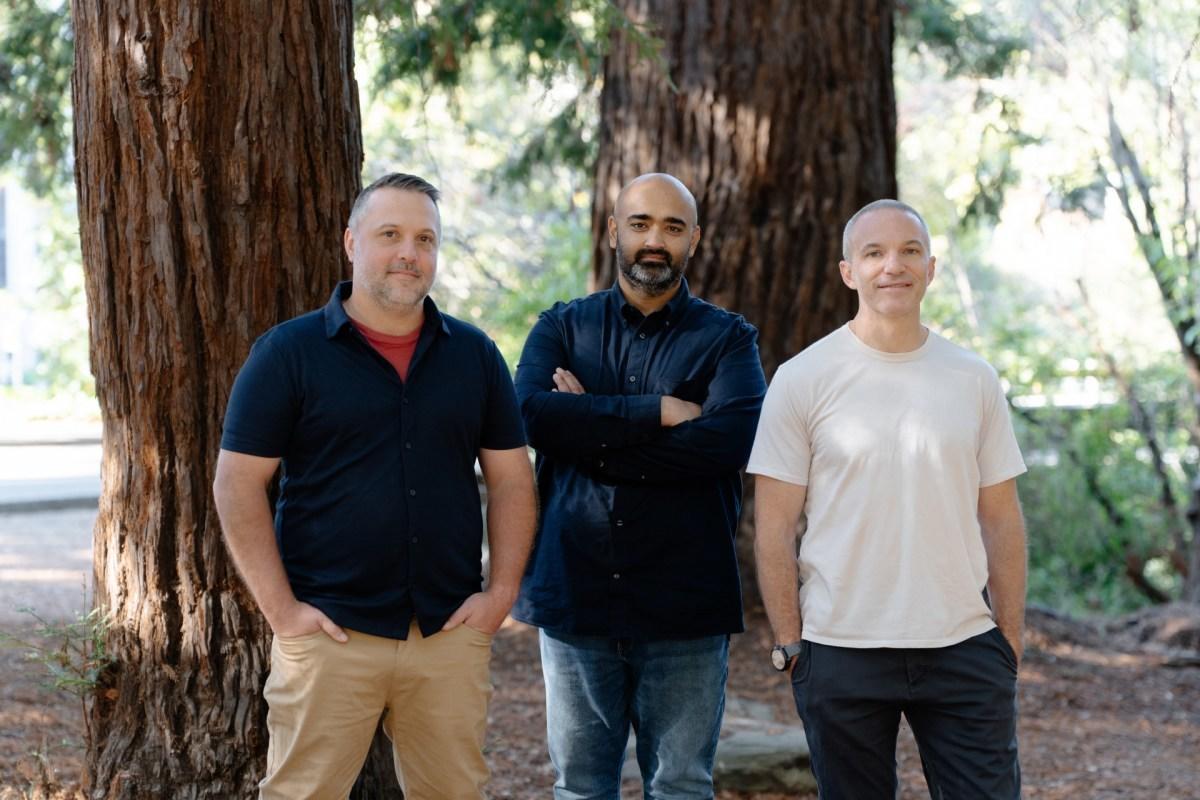AI in Insurance

Businesses Want to Insure Against AI Risks as Adoption Soars
More than 90% of businesses want insurance protection against generative AI risks, with over two-thirds willing to pay at least 10% higher premiums for such coverage, according to a Geneva Association survey of 600 corporate insurance decision-makers from across the world.
“Generative AI amplifies some existing risks and creates entirely new categories of exposure that extend beyond traditional insurance boundaries,” said Ruo (Alex) Jia, director of digital technologies at the Geneva Association and lead author of the report. “Our survey shows strong demand for risk transfer solutions, especially from firms that have already experienced severe Gen AI failures, but it also highlights insurability challenges. The task for insurers now is to define clear risk boundaries and pilot modular coverage models that can adapt to this evolving technology.”
Adoption Accelerates Despite Regional Differences
The rapid uptake of generative AI tools since late 2022 has created a patchwork of adoption patterns across global markets, the research found. U.S. and Chinese companies report the highest levels of implementation and perceived value, with 68% of U.S. businesses and 66% of Chinese firms rating generative AI as “very useful.” These markets also demonstrated the strongest appetite for insurance solutions, the report said.
Other global markets tell a different story. Japanese companies show the most skepticism, with only 18% finding significant value in Gen AI applications. German and French businesses face unique hurdles, with roughly 40% citing internal resistance from employees and customers as their primary implementation barrier.MORE

Insurers brace for 'silent AI' exposures as underwriting methods evolve
Artificial intelligence may be transforming underwriting and claims, but for insurers, it’s also introducing a fast-expanding set of risks – many of which are not yet clearly accounted for in policy language. Speaking at the National Insurance Conference of Canada (NICC), Michael Berger (pictured centre right), head of AI insurance at Munich Re, warned that insurers must start treating AI as a distinct exposure, not a hidden extension of traditional coverage.
“The most fundamental risk we see is essentially the correctness of AI and AI output,” Berger said. “However, there are many more AI risks.”
He cited research from the Massachusetts Institute of Technology cataloguing more than 700 distinct AI-related risks – a sign, he said, that exposures already extend across standard lines of business.
From ‘silent AI’ to new coverage models
Berger said the insurance industry is beginning to confront the question of “silent AI” – similar to how “silent cyber” once forced underwriters to clarify whether policies unintentionally covered cyber events.
The question now is how much AI risk the companies are covering in their existing products, and how much they want to cover, he said.

The state of insurance technology, AI in exclusive research
New research from Digital Insurance reveals insights into the technology that carriers, agents and brokers are actively using, as well as the types of solutions that insurance professionals are planning to adopt in the near future.
The "AI Readiness Survey 2025" offers a current look into the state of technology in use throughout the insurance industry, a deep dive on how insurance organizations use or hope to use AI technology and participant responses on how to achieve AI and tech infrastructure readiness.
The DI AI Readiness survey was fielded online during July and August, 2025 among 100 insurance professionals. All respondents have insight into, responsibility for, or oversight into the decisions around what technology is in use at their organization.
Top findings from the report:
- Document management systems and customer-focused tools are the most popular technologies in use by insurance organizations. - In a shift from previous years, staying competitive with peer organizations is one of the goals driving insurer technology strategy.
- Reducing the need for human talent is the least popular goal driving technology strategy.

Equisoft Launches AI-Powered Suite to Transform Insurance Operations Through Advanced Analytics, Automation and Human Augmentation
Equisoft, a leading global digital solutions provider to the financial services industry, today announced the launch of the Equisoft/amplify suite for life insurance carriers to accelerate business performance and agility, combining multiple AI components that work together to deliver unprecedented operational efficiency and market responsiveness.
Drawing on over 30 years of insurance expertise, Equisoft's solution bridges the gap between carriers' current reality and their AI-powered future by accelerating and enhancing modern insurance operations.
"Equisoft/amplify represents a fundamental shift in how life insurance carriers leverage AI to drive real business outcomes," said Olivier Lafontaine, Chief Product Officer at Equisoft. "By bringing together advanced analytics, autonomous AI agents, and human augmentation in a single integrated platform, we're enabling carriers to release products faster, optimize their operations continuously, and maintain comprehensive visibility through integrated data monitoring. The result is unprecedented business agility that allows carriers to capture market opportunities while maintaining operational excellence."
Commentary/Opinion

Executive Viewpoint: Reimagining Personal Lines Risk – Now and for the Future
For decades, personal lines insurance has taken a repair-and-replace approach to our business. As president of Nationwide’s Personal Lines, I’ve seen the impact this approach has on our customers and our industry. To truly meet customer needs, it’s time to shake up that approach and embrace a predict-and-prevent mindset.
In my new white paper, I identify five different factors that are pushing the industry to prioritize a predict-and-prevent mindset and highlight the critical role agents play in helping their customers embrace it.
Factor 1: Economic and environmental pressures are reshaping insurance.
Across the country, families are feeling the squeeze. Inflation, rising interest rates and severe weather events are driving up the cost of essentials—and insurance is no exception.READ ON
Casey Kempton is President, P&C Personal Lines at Nationwide
News
The world's largest property and casualty insurers, 2025 | S&P Global
The Progressive Corp. is now the world's fourth-largest property and casualty insurer by revenue after its gross premiums earned surged more than 20% in 2024, according to S&P Global Market Intelligence's 2025 rankings.
Progressive wrote $12.9 billion more net premium in 2024 than it did in 2023, with the majority of that growth coming from adding policyholders as opposed to rate increases.
Last year's fourth-placed insurer, The People's Insurance Co. (Group) of China Ltd. fell to sixth place in 2024, behind the Lloyd's of London marketplace, after its insurance service revenue increased by a modest 6.1%.
Progressive's rise up the ranks underlines the fact that it is gaining ground on State Farm Mutual Automobile Insurance Co., the market leader in US private auto, and the largest property and casualty (P&C) insurance underwriter in the world. State Farm stayed atop the rankings with $103.10 billion of direct premiums earned in 2024, up 17.7% year over year.
Growth continues
Strong revenue growth was a feature at most of the top 50 P&C insurers. Collectively, the group boosted its revenues by 8.3% to $1.62 trillion in 2024 from $1.50 trillion in 2023. Only two of the top 50 companies, Nationwide Mutual Group and American International Group Inc., reported revenue declines.
Nationwide's 9.1% drop can partly be explained by an 8.3% reduction in the net earned premiums of Nationwide Mutual Insurance Co., which makes up the largest part of the group. The reduction was seen across standard commercial, personal lines, excess and surplus, and specialty, and was the result of "intentional underwriting actions," according to the company's statutory annual filing for 2024.
Research

U.S. Property & Casualty Mutual Insurers Regain Their Footing: ALIRT Insurance Research
ALIRT recently released its annual study on U.S. property & casualty mutual insurers, as viewed through the lens of both the overall mutual insurance sector as well as the rating firm's proprietary Mutual Insurer Composite.
Recent years have proved challenging for mutual P&C insurers given adverse inflation, weather-related catastrophic loss, and reinsurance trends which have driven outsized losses for property coverages (both personal and commercial lines-oriented) in which mutuals have a concentrated focus. These outsized losses have led to a rolling series of downgrades and negative outlooks by A.M. Best over the past several years and forced many mutual insurers to re-strategize around organization structure, business line focus, and geographical footprint, as well as introduce more restrictive policy terms and conditions.
Mutual insurers have also responded by raising rates, with ALIRT's Mutual Composite charting strong annual direct premium growth rates in the period 2022-2024. This additional revenue, along with other remedial actions, resulted in near break-even underwriting results in 2024 and a 96.0% combined ratio through mid-year 2025.
The report includes:
- A discussion of the acceleration of a demutualization trend reaching back to 2019
- Breakdowns of direct premium growth for both commercial and personal lines business
- Premium Mix and Geographic Focus
- Underwriting and operating profitability trends
- Surplus development over time
- Commentary on the financial results of individual mutual insurers which overperformed and underperformed current composite results.
InsurTech/M&A/Finance💰/Collaboration
Insurtech Startup ZeroedOut Launches Nationwide with a New Approach to Auto Deductibles
ZeroedOut, a new financial technology company, announced its national launch today, offering a groundbreaking solution for drivers burdened by high auto insurance costs. The company's platform offers a membership that provides drivers with auto deductible protection. This allows members across the country to choose higher-deductible traditional insurance plans and significantly lower their monthly premiums without taking on financial risk.
The platform is designed to combat record-high auto insurance costs. By empowering drivers to confidently raise their deductibles to as high as $2,000, members can unlock immediate, substantial savings. When a member has an accident, ZeroedOut pays that high deductible on the member's behalf, sending funds directly to the auto body shop.
"We created ZeroedOut to give drivers a smarter way to save on auto insurance without the fear of high out-of-pocket costs," said Co-Founders Steven Morgan and Chris Hagans. "By providing our members with deductible protection when accidents happen, we eliminate the tradeoff between lower premiums and financial peace of mind."
Beyond the core benefit of deductible protection, ZeroedOut is building a membership community of financially savvy drivers. The company sees itself as more than a simple service; it's a financial empowerment movement. By joining this club, members unlock significant monthly savings, freeing up household income for debt repayment, savings, or family expenses. This shift represents a fundamental change in a consumer's financial situation, turning a mandatory expense into an opportunity for financial wellness.

Liberate bags $50M at $300M valuation to bring AI deeper into insurance back offices | TechCrunch
Liberate’s AI agents automate tasks for P&C insurers, working across sales, service, and claims.
Liberate, an AI startup automating insurance operations, has raised $50 million in a round led by Battery Ventures as it looks to scale its agentic deployments across carriers and agencies globally.
The all-equity round values the three-year-old startup at $300 million post-money, with participation from new investor Canapi Ventures and returning backers Redpoint Ventures, Eclipse, and Commerce Ventures.
The insurance industry has been navigating a difficult stretch, with rising operational costs, legacy system constraints, and increasing customer expectations. Specifically in the non-life segment, global premium growth is projected to slow through 2026, driven by heightened competition, weaker rate momentum, and new cost pressures, including tariffs, per a recent report by Deloitte. While some carriers experimented with AI, many early efforts stalled due to fragmented data and inflexible workflows. That is now changing, as insurers shift toward full-scale AI adoption — embedding it into the core of their operations rather than layering it on top. Liberate is stepping in to meet this shift head-on.
Founded in 2022, the San Francisco-based startup builds AI systems for property and casualty insurers, focusing on sales, service, and claims.
Climate/Resilience/Sustainability

Catastrophe modeling's new era: sharper risk, bigger questions for insurers
A surge of investment and competition has transformed catastrophe modeling for secondary perils, pushing the industry toward sharper risk insights and broader insurance solutions.
“There’s been great demand in the market to have solutions for these perils from the catastrophe modeling world,” said Adam Miron (pictured), head of catastrophe analytics at Juniper Re. The focus has shifted to perils like hail, wildfire, and flood – long considered difficult to model.
Major players Verisk and Moody’s released new severe convective storm and wildfire models, while new vendors entered the space.
“Catastrophe models have gotten significantly better in recent years, and I think they will only continue to get better because of the investment and the competition in that space,” Miron said.
Secondary perils and the pricing challenge
The push for better models is not just about technical progress; it is about meeting the market’s demand for actionable, quantitative risk assessments in areas that have historically been underserved.
“Whenever an insurer is looking at insuring in an area or a peril, they want to have some sort of quantitative sense about what the risk is,”
Miron said. The ability to price risk accurately opens the door for insurers to enter new markets, particularly those outside traditional high-risk zones.
“The more competition that you have in a certain area or peril, the more likely it is to drive down the price,” he said.
Podcast Sponsor

Audio Version - 'Connected: The Podcast' --- Sponsored by Pulse Podcasts
The ‘Connected’ Podcast by Alan Demers and Stephen Applebaum, is a condensed audio version of the day's ‘Connected' newsletter, a daily scan of all the happenings in the world of Insurance & InsurTech News.
Pulse Podcasts: Introduce a new way for your audience to hear your voice! We are a podcast creation service that helps businesses turn their written content, like blog posts and news articles, into beautiful podcasts. Our platform writes the script, records the voices, and mixes the audio to create engaging content for your audience. It's affordable and has super-fast turnaround!
LISTEN AND SUBSCRIBE BELOW
